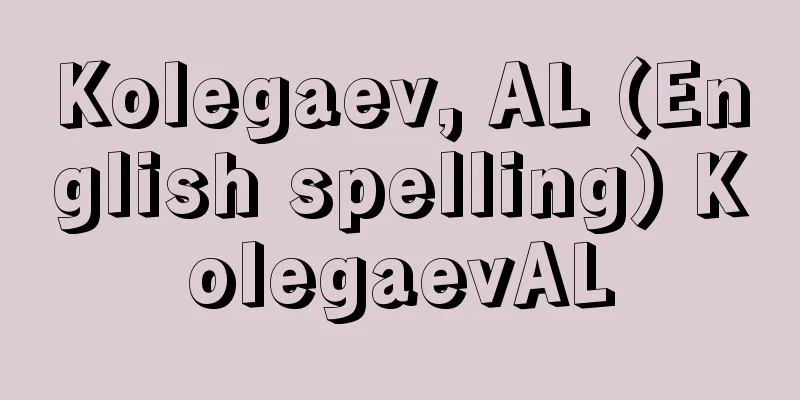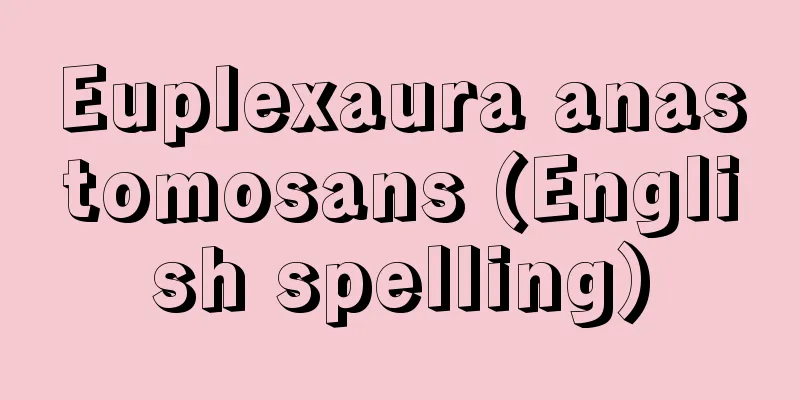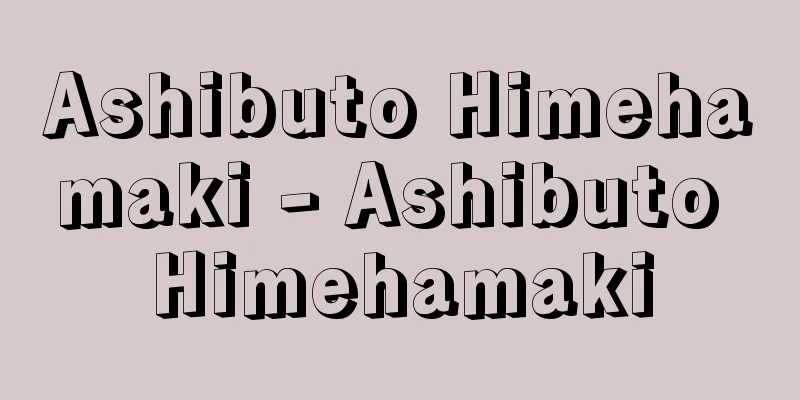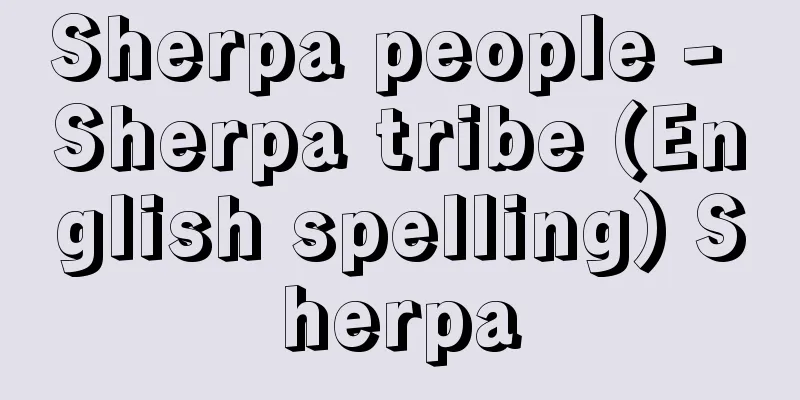Investigation - Yes
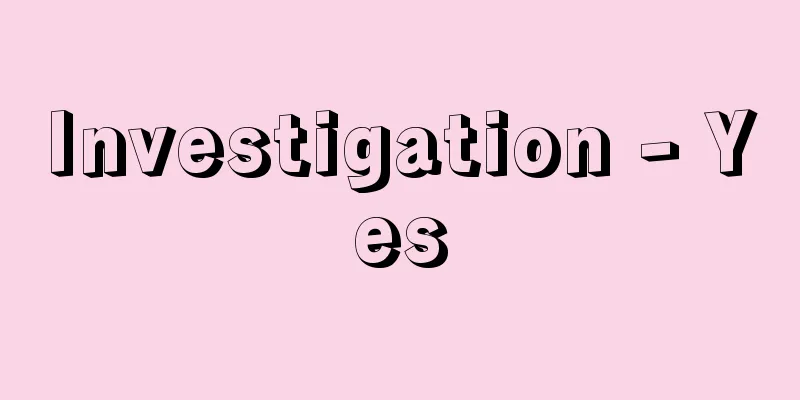
|
It refers to preserving evidence of a crime and preserving the custody of a suspect when a crime is believed to have been committed. The purpose of an investigation is to determine whether or not a crime is suspected, to decide whether or not to indict, and to make preparations in case prosecution is instituted. In many cases where a confession is made, investigative activities are carried out with the intention of not indicting, while in serious cases or cases where the allegations are denied, investigative activities are carried out from the beginning with the assumption that a trial will take place. Since an investigation is a crime-finding activity conducted by an investigative agency and is deeply related to the human rights of the people, the issue is how to structure the investigation to ascertain the truth while protecting the human rights of the people. On this point, the inquisitorial view of investigation holds that an investigation is a procedure by which an investigative agency interrogates a suspect, and that this is why coercion is permitted, while the impeachment view of investigation holds that an investigation is a preparatory activity for a trial conducted by an investigative agency, and that the suspect also makes preparations independently. In practice, investigations are conducted in accordance with the inquisitorial view of investigation. However, the suspect has the right to remain silent and the right to request a lawyer. Therefore, even if the investigation is conducted mainly through the investigative activities of the investigative agency, it is essential to harmonize it with the rights of the suspect. [Moriichi Taguchi] Principles of investigationInvestigative agencies may take measures necessary to achieve the purpose of the investigation, but compulsory measures may not be taken unless specifically provided for by law (Article 197, Paragraph 1 of the Code of Criminal Procedure; principle of legality of compulsory measures). Here, compulsory measures refer to measures that infringe on an individual's important interests. An investigation involving compulsory measures is called a compulsory investigation, while an investigation without compulsory measures is called a voluntary investigation. Voluntary investigations are the rule, with compulsory investigations being the exception. The Constitution also guarantees that, in principle, no person shall be arrested without a judge's warrant, and that no person shall be subject to intrusion, search, or seizure of his or her home, documents, or belongings (Articles 33 and 35). This is called the warrant principle. [Moriichi Taguchi] Type of investigationInvestigations are divided into voluntary investigations and compulsory investigations. Compulsory investigations include personal measures such as arrest, detention, and physical examinations, and property measures such as searches and seizures. Voluntary investigations include legally prescribed methods such as interrogations and appraisals, as well as various other methods such as questioning and tailing. An example of a special voluntary investigation is the so-called sting operation, which is an investigation method for difficult cases such as drug crimes and organized crime. A sting operation is an investigation method in which an investigative agency or an investigative collaborator requested by the agency conceals their identity and intentions from the other party and encourages them to commit a crime, and when the other party complies and commits a crime, they are arrested by arresting them in the act. In addition, controlled delivery (a so-called let-go investigation) is an investigation method in which the regulatory authorities, knowing that the goods are prohibited, do not seize them on the spot, but allow them to be distributed under the supervision of the investigative agency, track them, and identify the people involved in the illegal trade. In addition, with the internationalization of crimes, international investigations such as evidence collection and criminal preservation in foreign countries have become important issues. [Moriichi Taguchi] Investigative AgencyCriminal investigations are conducted by judicial police officers and public prosecutors (Criminal Procedure Code, Article 189, paragraph 2, Article 191, paragraph 1). Judicial police officers are divided into general judicial police officers and special judicial police officers. General judicial police officers are divided into judicial police officers and judicial constables. Judicial police officers are divided into superintendent generals, superintendent generals, superintendent generals, superintendents, police inspectors, assistant inspectors, and sergeants. Special judicial police officers include coast guard officers, labor standards inspectors, narcotics control officers, postal inspectors, penal institution officers, and captains, and each has its own legal basis. Public prosecutors also investigate crimes when they deem it necessary. Public prosecutors' assistant officers investigate crimes under the direction of public prosecutors. In this way, judicial police officers and public prosecutors are both investigative agencies, but public prosecutors have the authority to give instructions or commands to judicial police officers (see Article 193 of the same law). [Moriichi Taguchi] The Beginning of the InvestigationIn order to begin an investigation, it is necessary for the investigative agency to suspect (think) that a crime has been committed (Article 189, Paragraph 2 of the same law). The reason that leads the investigative agency to suspect that a crime has been committed is called the starting point of the investigation. The starting point of an investigation is when the investigative agency itself becomes aware of a crime, such as a routine questioning, vehicle checkpoint, or autopsy, or when a person other than the investigative agency reports to the investigative agency, such as a victim report, complaint, accusation, or surrender. In fact, in the vast majority of cases, a crime is made known through a report by a third party, such as a crime victim or witness. [Moriichi Taguchi] Preservation of suspects’ custodyArrest and detention are used to secure the custody of suspects. Arrests are divided into: (1) "ordinary arrests," which are made with an arrest warrant issued by a judge when there is sufficient reason to suspect that a suspect has committed a crime; (2) "arrest in flagrante delicto," which allows anyone to arrest a person who is currently committing or has just finished committing a crime (a person in flagrante delicto); and (3) "emergency arrests," which allow the arrest of a suspect by explaining the reasons when there is sufficient reason to suspect that a crime punishable by death or life imprisonment or incarceration for a maximum term of three years or more has been committed and the matter requires urgency. The requirements for detention, which is the holding of a person following an arrest, are that there is sufficient reason to suspect that a crime has been committed, and that there is one of the following reasons: no fixed address, risk of flight, or risk of destruction of evidence. A request for detention is made by the public prosecutor for an arrested suspect. This idea that detention cannot be granted without an arrest is called the principle of pre-arrest. Its purpose is to guarantee the human rights of suspects by providing a double check in which a judge exercises judicial restraint at the time of arrest, and then exercises further judicial restraint on detention. Detention is carried out when a judge informs the suspect of the suspected facts and hears their statement, and then issues a detention warrant. [Moriichi Taguchi] Preservation of evidenceThere are voluntary and compulsory measures for the collection and preservation of physical evidence. Voluntary measures include, for example, on-site inspections, while compulsory measures include searches, seizures, inspections, and appraisals. In principle, searches and seizures are conducted based on a search and seizure warrant issued by a judge (Criminal Procedure Law, Article 218, Paragraph 1). As an exception, when arresting a suspect, an investigative agency may, if necessary, enter a person's residence or other location without a warrant to search the suspect, and conduct seizures, searches, or inspections at the scene of arrest (Criminal Procedure Law, Article 220). As crimes have become more organized and clandestine, new scientific investigations have also been conducted. Photographing and videotaping people as an investigative method violates the privacy of individuals, but taking photographs on public roads is considered a voluntary measure because the expectation of protection is reduced compared to taking photographs inside a residence. In the past, forced urine collection in stimulant drug cases was conducted using a combination of a warrant for expert test and a warrant for physical examination, but legal precedent has determined that it may be conducted using a search and seizure warrant (a so-called forced urine collection warrant) that requires a doctor to use a method deemed medically appropriate. Wiretapping was previously conducted using a verification warrant, but the 1999 amendment to the Code of Criminal Procedure provided that compulsory measures for wiretapping electronic communications without the consent of either party to the communication are to be determined by a separate law (Article 222-2 of the same law). The Wiretapping Law (Law No. 137 of 1999, officially titled the "Law on Wiretapping for Criminal Investigation") was enacted, and wiretapping of certain types of crimes is now conducted based on a judge's warrant for wiretapping. Testimonial evidence is also necessary to clarify the facts of a crime. Testimonial evidence includes statements by suspects and statements by people other than suspects (victims, witnesses, etc.). Suspects' statements are obtained through questioning (Criminal Procedure Law, Article 198, Paragraph 1), while statements by people other than suspects are obtained through so-called witness questioning (Criminal Procedure Law, Article 223, Paragraph 1) and witness questioning (Criminal Procedure Law, Articles 226 to 228). When a suspect confesses during questioning while in custody, disputes often arise in court over the voluntariness of the confession. In the past, many witnesses were questioned and detailed questioning of the defendant was conducted over the voluntariness of the confession, but such a trial is difficult, especially in a lay judge trial. For these reasons, the need for audio and video recording of interrogations was pointed out, and partial audio and video recording of interrogations was implemented by the prosecution in 2006 and by the police in 2008. [Moriichi Taguchi] Conclusion of the investigationPolice investigations of minor crimes are concluded by a so-called minor offense disposition (Article 246, proviso of the same law). A minor offense disposition is a system in which judicial police officers, in accordance with the general instructions of the public prosecutor (Article 193, paragraph 1 of the same law), are not required to refer certain minor offenses to the public prosecutor, but are required to report these cases to the public prosecutor once a month. For other cases, when a judicial police officer has investigated a crime, he or she must promptly refer the case to the public prosecutor along with documents and evidence (Article 246 of the same law). This is called a referral to the public prosecutor (prosecutor's office), and the police investigation is concluded. Prosecutor's investigations include investigations of cases referred to the public prosecutor and investigations of cases that are known or directly received by the public prosecutor. Cases known or directly received by the public prosecutor (such as large-scale economic crimes) are naturally investigated independently. For cases referred to the public prosecutor, supplementary investigations are conducted from the perspective of the public prosecutor, that is, from the viewpoint of maintaining the fairness of the trial. [Moriichi Taguchi] [References] | | | Expert | | | | | | | | | | |Source: Shogakukan Encyclopedia Nipponica About Encyclopedia Nipponica Information | Legend |
|
犯罪があると考えた場合に、犯罪の証拠を保全し、被疑者の身柄を保全することをいう。捜査の目的は、犯罪の嫌疑の有無を解明して、公訴を提起するか否かの決定をなし、公訴が提起される場合に備えてその準備をなすことにある。多くの自白事件については不起訴処分を念頭においた捜査活動が展開され、また重大事件や否認事件では当初から公判を前提とした捜査活動が展開される。 捜査は、捜査機関による犯罪探索活動であり、国民の人権に深くかかわるものであるから、国民の人権を保障しながら真相を究明する捜査構造が問題となる。この点について、糾問的捜査観は、捜査は捜査機関が被疑者を取り調べるための手続であって、強制が認められるのもそのためであるとし、弾劾的捜査観は、捜査は捜査機関が行う公判の準備活動であり、被疑者もこれとは独立に準備を行うとする。実務では糾問的捜査観に沿った捜査実務が行われている。しかし、被疑者には黙秘権が保障されており、また弁護人依頼権も保障されている。したがって、捜査が捜査機関の捜査活動を中心に展開されるとしても、これらの被疑者の権利との調和を図ることが肝要である。 [田口守一] 捜査の原則捜査機関は、捜査の目的を達するため必要な処分を行うことができるが、強制処分は法律に特別の定めがある場合でなければ行うことはできない(刑事訴訟法197条1項。強制処分法定主義)。ここに強制処分とは、個人の重要な利益を侵害する処分をいう。強制処分を伴う捜査を強制捜査といい、強制処分によらない捜査を任意捜査とよぶ。捜査においては任意捜査が原則であり、強制捜査は例外である。また、憲法は、何人(なんぴと)も、原則として、裁判官の令状がなければ逮捕されることはなく、また、住居、書類および所持品について侵入、捜索および押収を受けることはない旨を保障している(33条、35条)。これを令状主義とよぶ。 [田口守一] 捜査の種類捜査は、任意捜査と強制捜査に区別される。強制捜査としては、逮捕・勾留(こうりゅう)や身体検査などの対人的処分と捜索、差押えなどの対物的処分がある。任意捜査には、取調べや鑑定など法律規定のあるもののほか、聞込みや尾行など多様な捜査方法がある。特殊な任意捜査の例としては、薬物事犯や組織犯罪など、捜査が困難な事件の捜査方法である、いわゆるおとり捜査がある。おとり捜査とは、捜査機関またはその依頼を受けた捜査協力者が、その身分や意図を相手方に秘して犯罪を実行するように働きかけ、相手方がこれに応じて犯罪の実行に出たところで現行犯逮捕等により検挙する捜査手法をいう。また、コントロールド・デリバリー(いわゆる泳がせ捜査)とは、取締り当局が、禁制品であることを知りながらその場で押収せず、捜査機関の監視の下にその流通を許容し、追跡して、その不正取引に関与する人物を特定する捜査手法である。また、犯罪の国際化に伴って、外国における証拠収集や犯人保全などの国際捜査も重要な課題となっている。 [田口守一] 捜査機関犯罪の捜査は、司法警察職員と検察官が行う(刑事訴訟法189条2項、191条1項)。司法警察職員には、一般司法警察職員と特別司法警察職員とがある。一般司法警察職員は、司法警察員と司法巡査に区別される。司法警察員には、警視総監、警視監、警視長、警視正、警視、警部、警部補および巡査部長の区別がある。特別司法警察職員には、海上保安官、労働基準監督官、麻薬取締官、郵政監察官、刑事施設職員、船長等があり、それぞれ法律に根拠規定がある。検察官も、必要と認めるときは犯罪の捜査を行う。検察事務官は、検察官の指揮を受けて犯罪の捜査を行う。このように、司法警察職員と検察官は、ともに捜査機関であるが、検察官は司法警察職員に対して指示あるいは指揮の権限を有している(同法193条参照)。 [田口守一] 捜査の端緒捜査を開始するためには、捜査機関が、犯罪があると思料する(考える)ことが必要である(同法189条2項)。そこで、捜査機関が犯罪があると思料するに至った理由を捜査の端緒という。捜査の端緒は、捜査機関が自ら犯罪を感知する場合として、職務質問、自動車検問あるいは検視等があり、捜査機関以外の者が捜査機関に届け出る場合として、被害届、告訴、告発あるいは自首等がある。実際に犯罪が認知されるのは、犯罪の被害者や目撃者等の第三者の届出による場合が圧倒的に多い。 [田口守一] 被疑者の身柄保全被疑者の身柄保全として逮捕と勾留がある。 逮捕には、(1)被疑者が罪を犯したことを疑うに足りる相当な理由がある場合に、裁判官から逮捕状を得て行われる「通常逮捕」、(2)現に罪を行いまた行い終わった者(現行犯人)を、何人でも逮捕状なくして逮捕することができる「現行犯逮捕」、(3)死刑または無期もしくは長期3年以上の懲役・禁錮にあたる罪を犯したことを疑うに足りる十分な理由がある場合で、急速を要し、裁判官の逮捕状を求めることができないときは、その理由を告げて被疑者を逮捕できるとする「緊急逮捕」の区別がある。 逮捕に引き続く身柄拘束である勾留の要件は、罪を犯したことを疑うに足りる相当な理由があり、かつ、住所不定、逃亡のおそれまたは罪証隠滅のおそれのうちのいずれか一つの理由があることである。勾留の請求は、逮捕した被疑者につき、検察官がこれを行う。このように、逮捕を経なければ勾留をすることができないとする考え方を、逮捕前置主義という。その趣旨は、逮捕に際して裁判官による司法的抑制をなし、また勾留についても再度の司法的抑制をなすという二重のチェックをなすことで被疑者の人権を保障しようとするところにある。勾留は、裁判官が、被疑者に被疑事実を告げ、これに関する陳述を聴いたうえで、勾留状を発してなされる。 [田口守一] 証拠の保全物的証拠の収集保全にも任意処分と強制処分があり、任意処分としては、たとえば実況見分などがあり、強制処分としては、捜索、差押え、検証、鑑定などがある。捜索・差押えは、原則として、裁判官の発する捜索差押許可状に基づいて行われる(刑事訴訟法218条1項)。例外として、捜査機関は、被疑者を逮捕する場合において、必要があるときは、令状なくして、人の住居等に入って被疑者を捜索し、逮捕の現場で差押え、捜索または検証を行うことができる(同法220条)。犯罪の組織化あるいは密行化に伴って、新たな科学的捜査も行われるようになった。捜査手段としての人物の写真撮影・ビデオ撮影は、個人のプライバシーを侵害する捜査方法であるが、公道での写真撮影等は住居内のそれに比べて保護の期待権が減少しているとして、任意処分と解されている。覚せい剤事犯に関する尿の強制採取については、以前は、鑑定処分許可状と身体検査令状を併用して行っていたが、判例は、医師をして医学的に相当と認められる方法により行うとする条件を付した捜索差押許可状(いわゆる強制採尿令状)によって実施しうるとしている。通信傍受については、以前は、検証令状により実施されていたが、1999年(平成11)の刑事訴訟法改正により、通信の当事者のいずれの同意も得ないで電気通信の傍受を行う強制の処分は、別に法律で定めるところによるとの規定が設けられた(同法222条の2)。法律として、通信傍受法(平成11年法律第137号。正式名称は「犯罪捜査のための通信傍受に関する法律」)が制定され、特定の犯罪類型に関する通信傍受が、裁判官の傍受令状に基づいて実施されることになった。 犯罪事実の解明のためには供述証拠も必要である。供述証拠には、被疑者の供述と被疑者以外の者(被害者、目撃者など)の供述とがある。被疑者の供述は、被疑者の取調べにより(刑事訴訟法198条1項)、被疑者以外の者の供述は、いわゆる参考人取調べの場合(同法223条1項)と証人尋問による場合(同法226条~228条)とがある。身柄を拘束された被疑者の取調べにより被疑者が自白した場合、その自白の任意性をめぐって公判で争いが生ずることも多い。以前は、自白の任意性をめぐって多数の証人を取り調べたり、詳細な被告人質問を行ったりしてきたが、とりわけ裁判員裁判ではそのような審理を行うことは困難である。このようなことから取調べの録音・録画の必要性が指摘され、検察では2006年から、警察でも2008年から取調べの部分的な録音・録画が実施されることとなった。 [田口守一] 捜査の終結警察の捜査は、軽微な事件についてはいわゆる微罪処分によって終結する(同法246条但書)。微罪処分とは、司法警察員が検察官の一般的指示(同法193条1項)により、一定の微罪について検察官に送致することなく、これらの事件を毎月1回一括して検察官に報告すれば足りるとする制度である。それ以外の事件については、司法警察員は、犯罪の捜査をしたときは、速やかに書類および証拠物とともに事件を検察官に送致しなければならないとされている(同法246条)。いわゆる検察官送致(送検)であり、これによって警察捜査は終結する。検察捜査には、送致事件の捜査と検察官認知・直受事件の捜査がある。検察官認知・直受事件(大規模経済犯罪など)については当然独自捜査がなされる。送致事件については、検察官の立場すなわち公判維持の観点から、補充捜査がなされることになる。 [田口守一] [参照項目] | | | | | | | | | | | | | | | | | |出典 小学館 日本大百科全書(ニッポニカ)日本大百科全書(ニッポニカ)について 情報 | 凡例 |
>>: Solemn Mass - Missa solemnis
Recommend
Memuro [town] - Memuro
A town in Kasai District, Hokkaido. It is located ...
Anthem
… Among the other Protestant denominations that a...
Chucho Navarro (English spelling) Chucho Navarro
...The band visited Japan several times between 1...
Jemdet Nasr (English spelling)
...A culture dating from around 3200 to 3100 BCE,...
Archimedes' Principle - The Benefits of Walking
The principle that when an object is partially or...
Matsusuke Onoe (III)
...Kabuki actor. There are five generations. (1) ...
Kazuyuki Egi
Year of death: August 23, 1932 Year of birth: Apri...
Acharanata - Acharanata
…It is a Chinese translation of the Sanskrit name...
Kiraigo - Kiraigo
A folk art form. Bon Kyogen is handed down in Kos...
House of Khodja
A religious aristocratic family active mainly in t...
Kasukabe Tojo
...Remains of the jori system can be seen around ...
Sekijinyama Tomb
This 110m long keyhole-shaped tumulus (historic si...
Kawashima Castle
...A river terrace called the Kawashima Plateau d...
China-India border issue
The border demarcation issue between India and Chi...
Poor harvest - kyousaku
This refers to a severe crop failure, including g...



